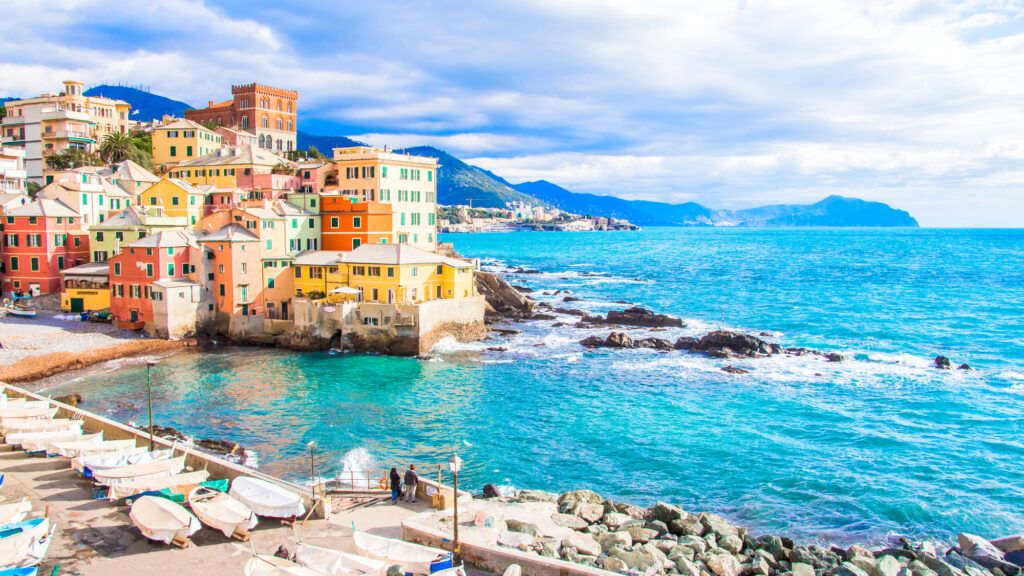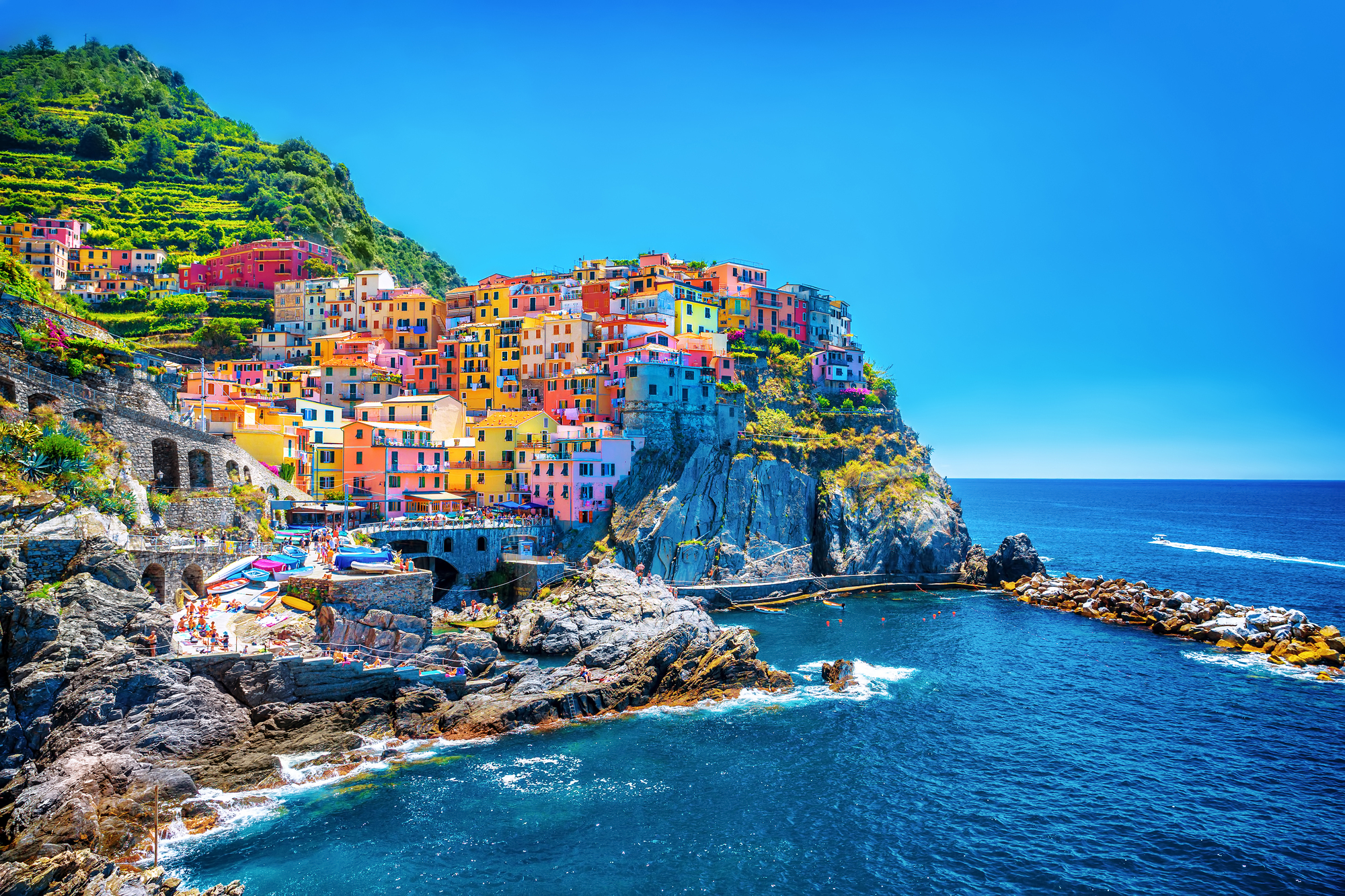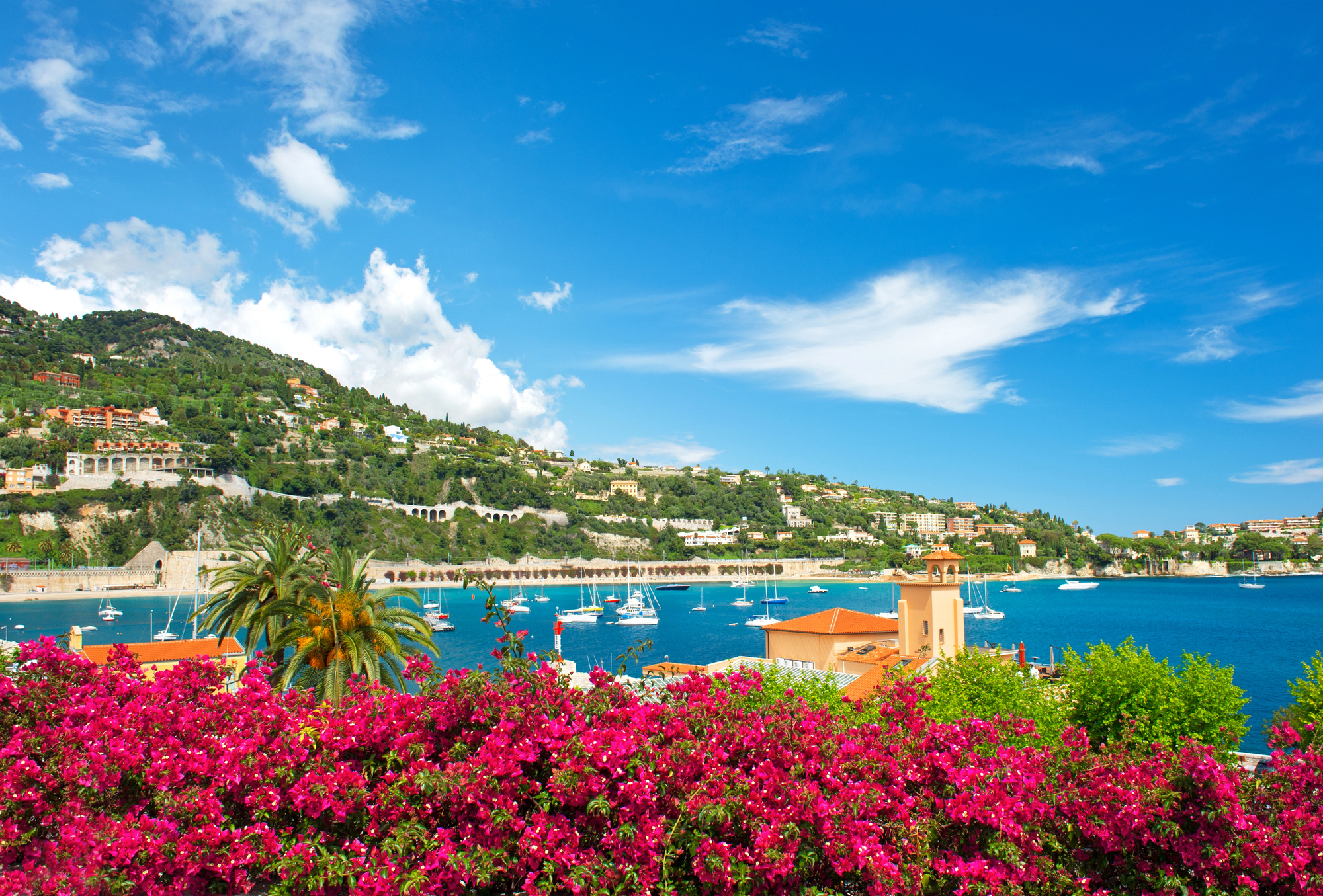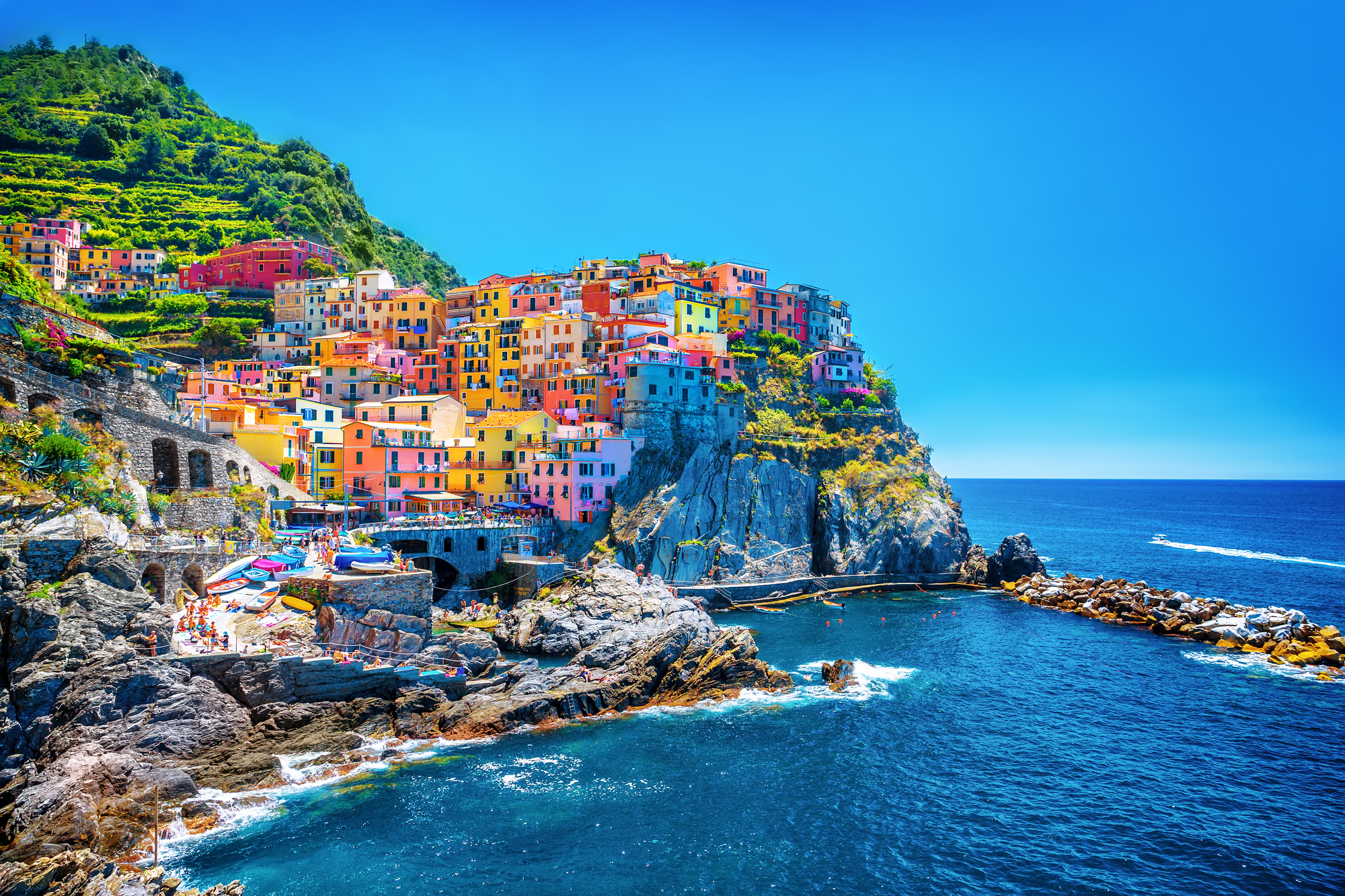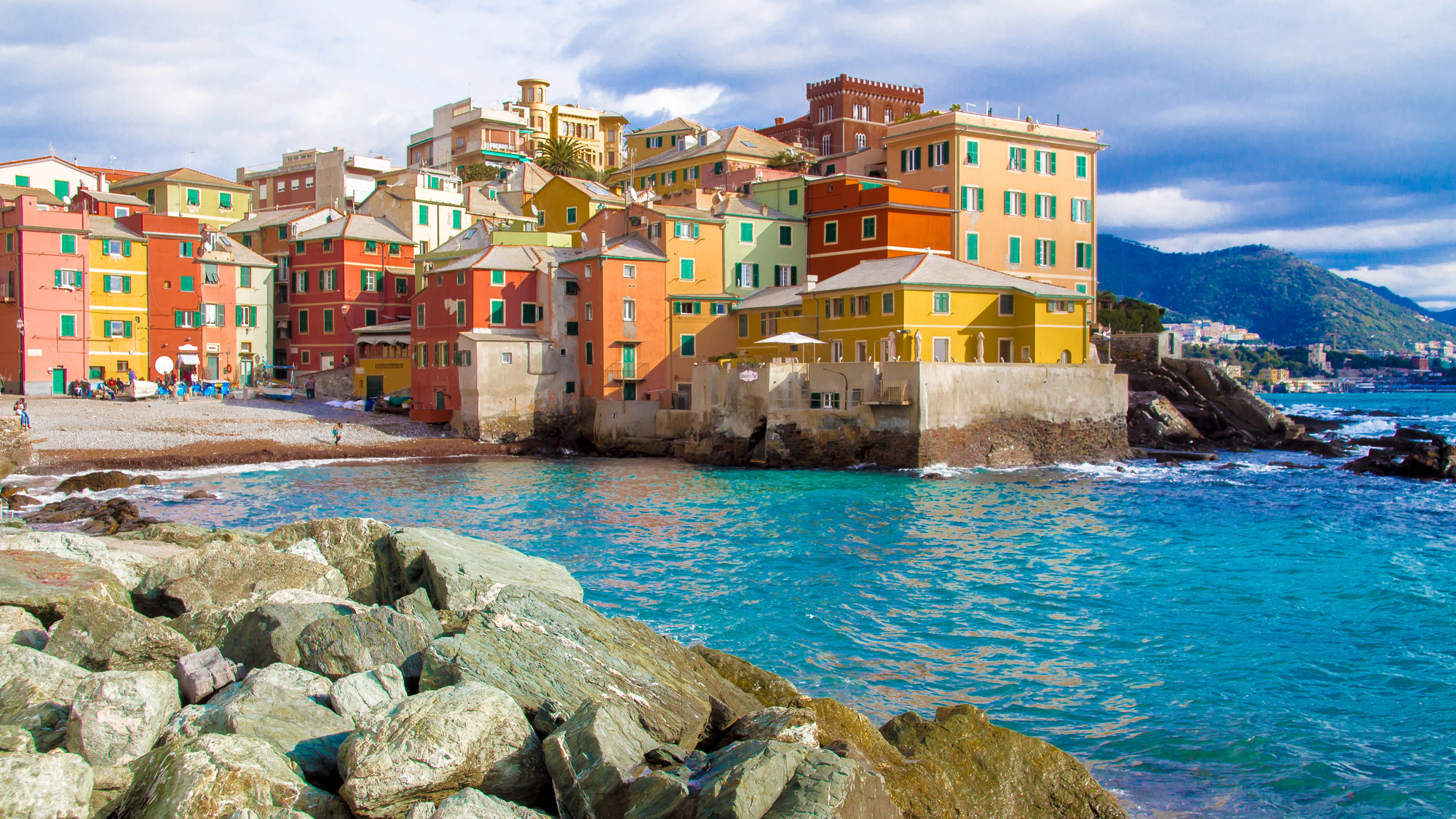Looking for a beach getaway up north in Italy? Genoa’s coastline has a mix of urban and tucked-away beaches that most travelers skip. Top beaches in Genoa? Spiaggia di Vernazzola, Bagni Vittoria, and Spiaggia Di Voltri, each with their own vibe for anyone seeking sun in Liguria.
If you feel like wandering farther, the Italian Riviera opens up even more choices. Monterosso al Mare’s gorgeous beaches are an easy train ride from Genoa Brignole. Paraggi Bay, Baia del Silenzio in Sestri Levante, and San Fruttuoso beach near Camogli all deliver clear waters and one-of-a-kind coastal settings.
Get a discount of 15% to 70% on accommodation in Genoa! Look for deals here:
Genoa Hotels, Apartments, B&Bs
For a classic beach day in 2025, why not head west from Genoa toward the French border? The beaches in Arenzano are relaxed, local, and less crowded than the Riviera’s usual hotspots. This stretch of coast offers a mix of sandy stretches and rocky coves, all with that shockingly blue water.
Understanding Genoa’s Beaches
Genoa’s coastline isn’t your typical Italian beach scene—it’s way more varied. The city’s geography gives you all sorts of beach experiences worth checking out.
Overview of Beach Types
Most Genoa beaches are pebbly or rocky, not those big sandy expanses you might expect. Vesima stands out—it’s right near Arenzano and is probably the city’s most notable beach. Rather than long stretches, you’ll find little coves tucked between cliffs and rocks.
You’ll spot both free public areas and private beach clubs (“stabilimenti balneari”) here. These clubs rent out loungers and umbrellas, offer changing rooms, and usually serve food, all for a daily fee.
The mountains crowding Genoa mean you get more intimate coves and crystal-clear water rather than wide, open beaches. That rocky landscape actually helps keep the water extra clean and blue—kind of a hidden perk.
Best Time to Visit
Genoa’s beach season really kicks off mid-June and goes through early September. Water’s warmest in July and August, but so are the crowds—especially on weekends.
If you can, try late May or early June. The weather’s pleasant (think 70-75°F/21-24°C), and you won’t be fighting for towel space. September’s nice too, with sea temps staying warm.
Mornings are usually the calmest for swimming; afternoons bring breezes, which are great for sailors and windsurfers but maybe less fun if you just want a peaceful swim.
Honestly, weekdays beat weekends. Locals love their beaches, and it can get packed when everyone’s off work.
Essential Beach Etiquette
Beach life in Genoa (and the whole Riviera) has its own set of unwritten rules. At private clubs, you pay to get in and rent your spot—don’t grab a chair you haven’t paid for, even if it looks free.
Topless sunbathing? Women can usually get away with it, but take a look around to see what the locals are doing first. Full nudity’s a no-go on public beaches.
Bring your own towel—even at private clubs, they rarely hand those out. There’s not much natural shade, so pack sunscreen and maybe a hat.
Pick up after yourself. Don’t take pebbles or shells—that’s actually illegal in a lot of places here. If you’re heading to a smaller cove, bring everything you need; you can’t count on finding food or facilities.
Top Beach Destinations in and Around Genoa
Genoa’s a gateway to some of Italy’s prettiest coast, with clear water and charming villages just a short hop from the city.
Boccadasse
This little fishing village hugs the east end of Genoa’s main waterfront. Boccadasse looks like something from a storybook—pastel houses crowding around a tiny pebble beach.
The beach is small but cozy, tucked into a cove so the water stays calm. In summer, locals spread towels right on the pebbles. There are a few gelato spots and cafes along the waterfront—perfect for an espresso or a spritz with a sea view.
You can stroll here in about 30 minutes from central Genoa along Corso Italia, or grab bus 42. Try catching a sunset; the light on those buildings is unreal.
Camogli
Just 25 kilometers east, Camogli is a gem that somehow still feels under-the-radar. This fishing village has a long pebble beach backed by tall, colorful buildings.
The water’s crystal-clear, and there are beach clubs for renting chairs and umbrellas. Camogli keeps things authentic—less touristy than you might expect.
Grab some local focaccia with cheese from a bakery near the sea. Seafood lovers can find great restaurants serving what came off the boats that morning.
Getting here by train from Genoa Brignole or Piazza Principe is a breeze—about 30 minutes.
Santa Margherita
Santa Margherita manages to feel both elegant and relaxed. It’s about 35 kilometers from Genoa, with several beaches—some free, some with clubs.
The main beach has good facilities and clear water, while Paraggi Beach (between Santa Margherita and Portofino) is rare for this region: fine sand and emerald water, sheltered by a small bay.
Palm trees line the promenade, and you’ll find plenty of shops and restaurants. It’s a good fit for families, couples, or anyone who wants a bit of style without the fuss.
Trains from Genoa run often and take about 40 minutes. Ferries can take you to other coastal towns too.
Portofino
Portofino’s famous for a reason. It sits on a peninsula past Santa Margherita, and while it’s not really a beach town, Paraggi Beach nearby is a stunner.
The village itself is all pastel buildings around a perfect little harbor. Yachts bob in the water, and boutiques and cafes line the shore.
Hike up to Castello Brown or the lighthouse (Il Faro) for some of the best views on the Riviera.
You can get here by boat from Santa Margherita or by bus. It takes about an hour from Genoa by public transport—totally worth it for the scenery.
Exploring Nearby Coastal Gems
Genoa makes a great base for day trips to some of Italy’s most beautiful coast. Ferries and trains run daily to colorful villages and lovely beaches.
Cinque Terre and the Five Lands
Cinque Terre is a cluster of five fishing villages clinging to the cliffs. Monterosso, Vernazza, Corniglia, Manarola, and Riomaggiore—each with its own personality.
Hiking trails and train lines link the villages. Cars are mostly out, so things stay peaceful.
Hop a regional train from Genoa Brignole—it’s 1.5 to 2 hours, depending on your stop.
If you’re planning to explore, grab the Cinque Terre Card. It covers train rides between villages and gets you onto the hiking trails.
Monterosso
Monterosso is the biggest of the five and the only one with real sandy beaches. The water’s clear, and the sand is a nice change from Genoa’s pebbles.
There’s an old town and a newer area called Fegina, linked by a tunnel. The main beach stretches along Fegina—expect colorful umbrellas and busy beach clubs in summer.
The water’s usually calm, so it’s good for families. Cafes and restaurants line the shore.
For a solid day trip, catch an early train from Genoa Brignole and plan to spend most of the day exploring. Bring water, sunscreen, and comfy shoes—there’s a lot of walking.
Beach Activities and Water Sports
Sure, you can just relax on the beach—but Genoa’s also great for getting out on the water. The city mixes classic Mediterranean beach days with fun water activities in its historic harbor.
Swimming and Sunbathing
From May to September, Genoa’s beaches are perfect for a swim or a sunbathe. Water’s warmest in July and August (73-77°F/23-25°C). Renting an umbrella and lounger usually runs €10-15 per day.
Boccadasse’s tiny pebble beach is great for a quick dip. Corso Italia, the main promenade, has more space and several beaches (both free and private) along its 2.5 km stretch.
Most beaches are pebbly, so water shoes help. Early mornings or late afternoons are the best times for sunbathing—midday sun here is no joke.
Boat Tours and Harbor Cruises
Porto Antico (the Old Port) is where you’ll find loads of boat tours showing off Genoa from the sea. Tours usually last 1-2 hours, start at €25 per person, and give you a fresh angle on the city’s old buildings and busy port.
Some options include:
- Harbor tours: about 45 minutes around the commercial and cruise terminals
- Coastal cruises: 2-hour trips along the Ligurian coast
- Sunset sailings: evening rides with drinks and snacks (€40-60)
Many cruises swing by the Lanterna lighthouse or pass colorful villages like Boccadasse and Nervi. In summer, book ahead—especially for the sunset or themed tours.
Snorkeling and Diving
The marine area around Genoa is fantastic for underwater exploring. On clear days, you can see up to 20 meters—plenty of fish, rocks, and the occasional surprise.
Beginners often head to Punta Chiappa, a rocky point you can reach by boat from Camogli. Renting a snorkel set (mask, snorkel, fins) costs about €15-20. June to September is best for visibility.
Diving centers in Genoa run trips to:
- Shallow reefs near Nervi (good for newbies)
- Wrecks sunk along the coast
- Sea caves (for experienced divers)
A typical two-tank dive costs €80-100 with gear. You’ll need a certification for most dives, but beginners can take intro courses starting at €150.
Dining by the Sea: Genoese Cuisine
Genoa’s spot on the coast has shaped its food—think fresh seafood and simple, bold flavors that really show off Liguria’s culinary roots.
Seafood Specialties
The Ligurian Sea spoils Genoa with plenty of fresh seafood. Along the beaches, local restaurants dish up daily catches—honestly, it’s hard to go wrong with what they offer.
Must-try seafood dishes:
- Fritto misto di mare (mixed fried seafood)
- Acciughe marinate (marinated anchovies)
- Cappon magro (elaborate seafood and vegetable salad)
Traditional sciamadde—those tiny, no-frills eateries by the waterfront—focus on simple seafood that really lets the fresh flavors shine. Lots of seaside places show off their catches in ice-filled windows, so you can just pick whatever looks best.
If you want the real deal, head out to Boccadasse or Nervi. These fishing villages have small, family-run spots serving whatever the boats brought in that morning.
Iconic Dishes: Focaccia and Farinata
Genoese cuisine of the Italian Riviera is famous for two street foods you’ll stumble across in bakeries everywhere.
Focaccia Genovese isn’t your average bread—it’s golden, brushed with olive oil, crisp on the outside, soft inside. Locals dunk it in cappuccino for breakfast or just grab it as a snack any time.
Farinata is a thin, rustic pancake made from chickpea flour, baked in big copper pans in wood-fired ovens. It comes out crispy around the edges, soft in the center, with a nutty flavor and a hit of rosemary or black pepper.
Some of the tastiest focaccia and farinata come from friggitorie and sciamadde—those traditional little street food shops you’ll spot around the old port.
Famous Pesto and Trofie
Pesto alla Genovese might just be the city’s most iconic export. The real stuff mixes Ligurian basil, pine nuts, garlic, Parmigiano-Reggiano, Pecorino, and local olive oil.
Trofie—those short, twisted noodles—are made from wheat flour and seem almost designed to catch every bit of pesto.
If you’re after real Genoese pesto, look for restaurants with the “Pesto Genovese” consortium label. That guarantees they’re sticking to tradition.
Places like Ristorante Creuza de Ma nail the classic trofie-and-pesto combo. Still, the best pesto moments often happen in tiny, family-run trattorias tucked away from the main tourist drag.
Genoa’s Historical and Cultural Highlights
Genoa’s history is layered everywhere you look—medieval alleys, grand Renaissance palaces, all jammed into a city that once ruled the seas.
The Historical Centre and Caruggi
The Centro Storico is one of Europe’s biggest medieval quarters. Its caruggi—those twisting, narrow alleys—snake between tall, ancient buildings.
Wandering here feels like stepping back in time. Buildings squeeze together, casting cool shadows, then suddenly you pop out into a sunlit piazza.
Shops, restaurants, and homes all blend together in these tangled lanes. Some alleys barely fit two people side by side.
You’ll stumble on tiny artisan workshops, old food shops, and classic trattorias serving up Ligurian favorites.
UNESCO World Heritage Sites
Genoa shows off its UNESCO treasures with the Strade Nuove and Palazzi dei Rolli. During the Renaissance, these “new streets” and their palaces were built as Genoa reached its peak.
The Palazzi dei Rolli—grand mansions owned by the city’s richest families—made up an official list of homes fancy enough to host important guests. It’s a quirky bit of history that really shows off Genoa’s style.
Via Garibaldi (once Strada Nuova) lines up these palaces in all their glory. Expect ornate facades, hidden courtyards, and impressive art.
These days, many palaces serve as museums. The Palazzo Rosso, Palazzo Bianco, and Palazzo Tursi connect into a museum complex with art from local masters and beyond.
Landmarks: Cathedral of San Lorenzo and Palazzo Ducale
The Cathedral of San Lorenzo stands out with its bold black and white marble stripes. Built from the 12th to 14th centuries, it mixes Romanesque and Gothic styles.
Inside, you’ll spot religious treasures like the Sacro Catino—a dish once thought to be the Holy Grail. During World War II, a shell crashed into the right nave but never exploded; it’s still there.
The Palazzo Ducale was Genoa’s political core for centuries. This huge building held the republic’s government and, honestly, its power.
Now, the palace hosts art shows, cultural events, and big conferences. Its grand halls and courtyards jump from medieval to neoclassical styles depending on where you wander.
Up in the Torre Grimaldina, you’ll find old prison cells with graffiti scratched by prisoners—strange little windows into the past.
Scenic Neighborhoods and Panoramic Spots
Genoa’s viewpoints are something else. From these panoramic spots, you get the full clash of blue sea and colorful city packed between mountains.
Castelletto and Spianata Castelletto
Castelletto, perched high above the city, is one of Genoa’s most elegant neighborhoods. You can skip the climb by hopping on the old Art Nouveau lift from Piazza Portello.
At Spianata Castelletto, a big terrace opens up to one of the best views in town. The whole city stretches below—from the old harbor to the new port.
From up here, Genoa’s odd shape really makes sense: buildings crammed between steep hills and the sea. On clear days, you can see way beyond the city.
Grab a coffee or gelato at one of the terrace cafés and just soak it all in. Sunset is pure magic here, when the city lights start to flicker on.
Getting Around: Transportation Tips
Getting around Genoa and out to the beaches isn’t too tricky once you get the hang of local transit and connections.
From Milan to Genoa
Trains are hands-down the easiest way from Milan to Genoa. The ride takes between 1.5 and 2 hours, depending on the train. Freccia high-speed trains get you there quicker (but cost more), while regional ones are cheaper but slower.
Buy tickets online at Trenitalia or at the station. Expect to pay anywhere from €9-€25 one way. Trains leave regularly from Milano Centrale and arrive at either Genova Piazza Principe or Genova Brignole.
If you’re driving, the A7 highway links Milan and Genoa in about 2 hours. Just be warned—parking in Genoa can be a headache and isn’t cheap.
Local Transit and Beach Access
Public transport in Genoa is pretty solid and makes reaching the beaches easy on the wallet.
Bus System: Buses go everywhere, including out to the beaches. You’ll need to buy your ticket at a tobacco shop or newsstand before hopping on.
Metro: The metro’s small but handy for getting across the city center or making connections.
Funiculars: These quirky hillside railways give you both a ride and a view.
For beaches farther out, trains from Genova Brignole can whisk you to Monterosso al Mare or other Riviera towns in 20–60 minutes.
The Moovit app comes in handy for checking bus routes and times. Late at night, taxis are a solid backup, especially when you’re too tired to navigate the maze of old streets.
Notable Genoese Figures and Architecture
Genoa’s given the world some big names and even bigger buildings, from medieval towers to modern marvels.
Christopher Columbus’s Legacy
Christopher Columbus is easily Genoa’s most famous export. Born here in 1451, he set off on voyages that would, for better or worse, change world history.
You can swing by Columbus House (Casa di Colombo) in the old center. Whether or not he actually lived there, the place is packed with artifacts and documents that keep his legend alive.
A big statue near the train station shows Columbus holding an anchor—a nod to his seafaring life.
Columbus’s legacy isn’t just about monuments. His journeys kicked off Genoa’s golden age of trade, helping fund many of the palaces you’ll still see lining the streets.
Renzo Piano and Modern Landmarks
Renzo Piano, born in Genoa in 1937, stands out as the city’s modern architectural genius. Over the years, he’s helped reshape Genoa’s look and feel, all while picking up international praise.
His Porto Antico (Old Port) redevelopment in 1992 gave the city a new lease on life. What used to be industrial docks now buzzes with energy—a waterfront full of locals and visitors, featuring the quirky Bigo elevator and the Biosfera, that glass bubble with its own little tropical world inside.
The Aquarium of Genoa? That’s Piano’s too. It’s actually Europe’s largest, and its ship-like design just seems to belong right there by the water.
Piano hasn’t stopped at public spaces. The Strada Nuova Museums really show off his knack for blending historical preservation with up-to-date, practical design.
If you ever find yourself wandering Genoa, you can’t help but notice how Piano’s work stands in lively conversation with the city’s medieval and Renaissance buildings. It’s proof that Genoa keeps moving forward, but still tips its hat to the past.
Read our articles on the best things to do in Genoa, Italy and best restaurants in Genoa, Italy for even more ideas!
Get a discount of 15% to 70% on accommodation in Genoa! Look for deals here:
Genoa Hotels, Apartments, B&Bs

